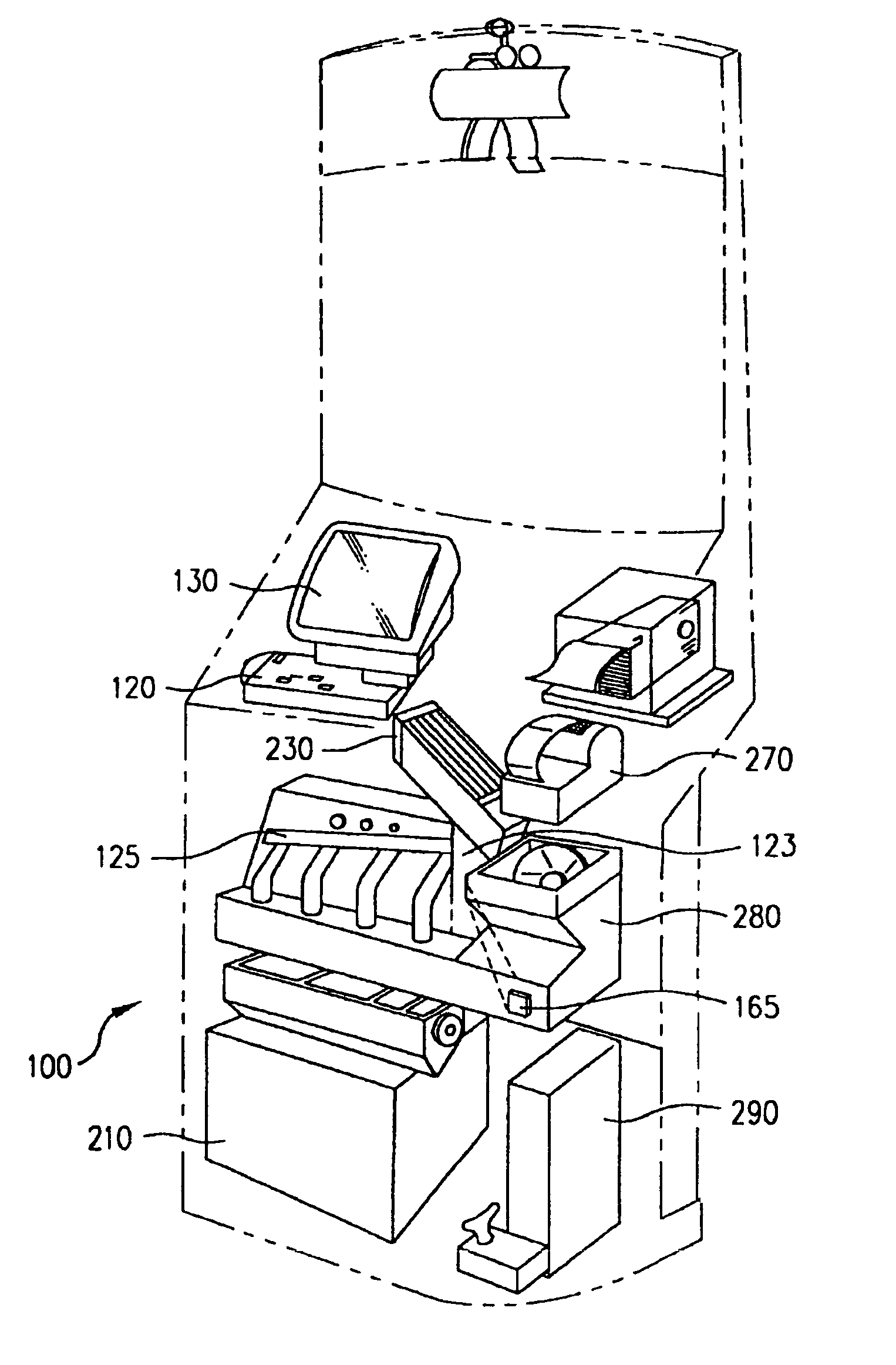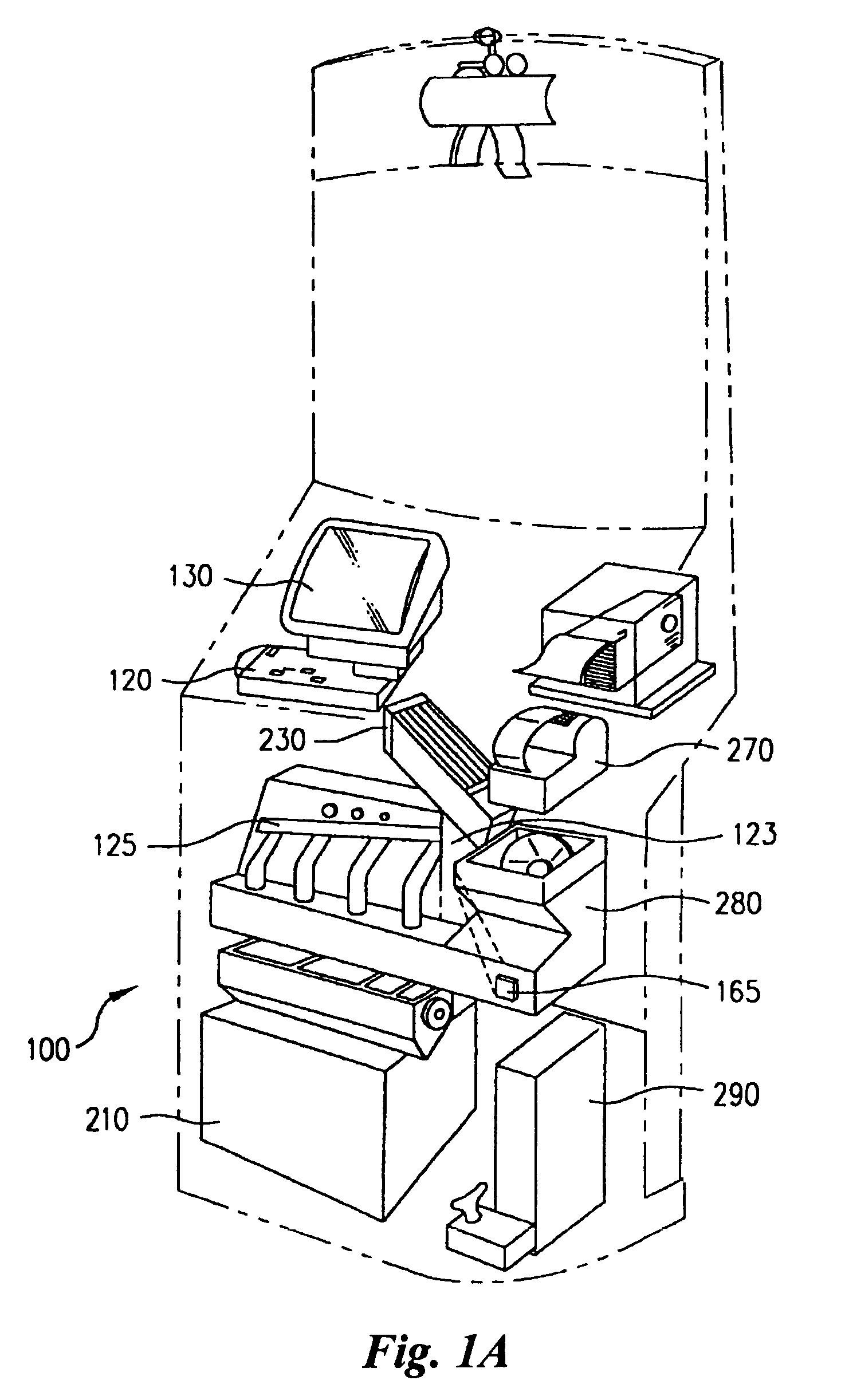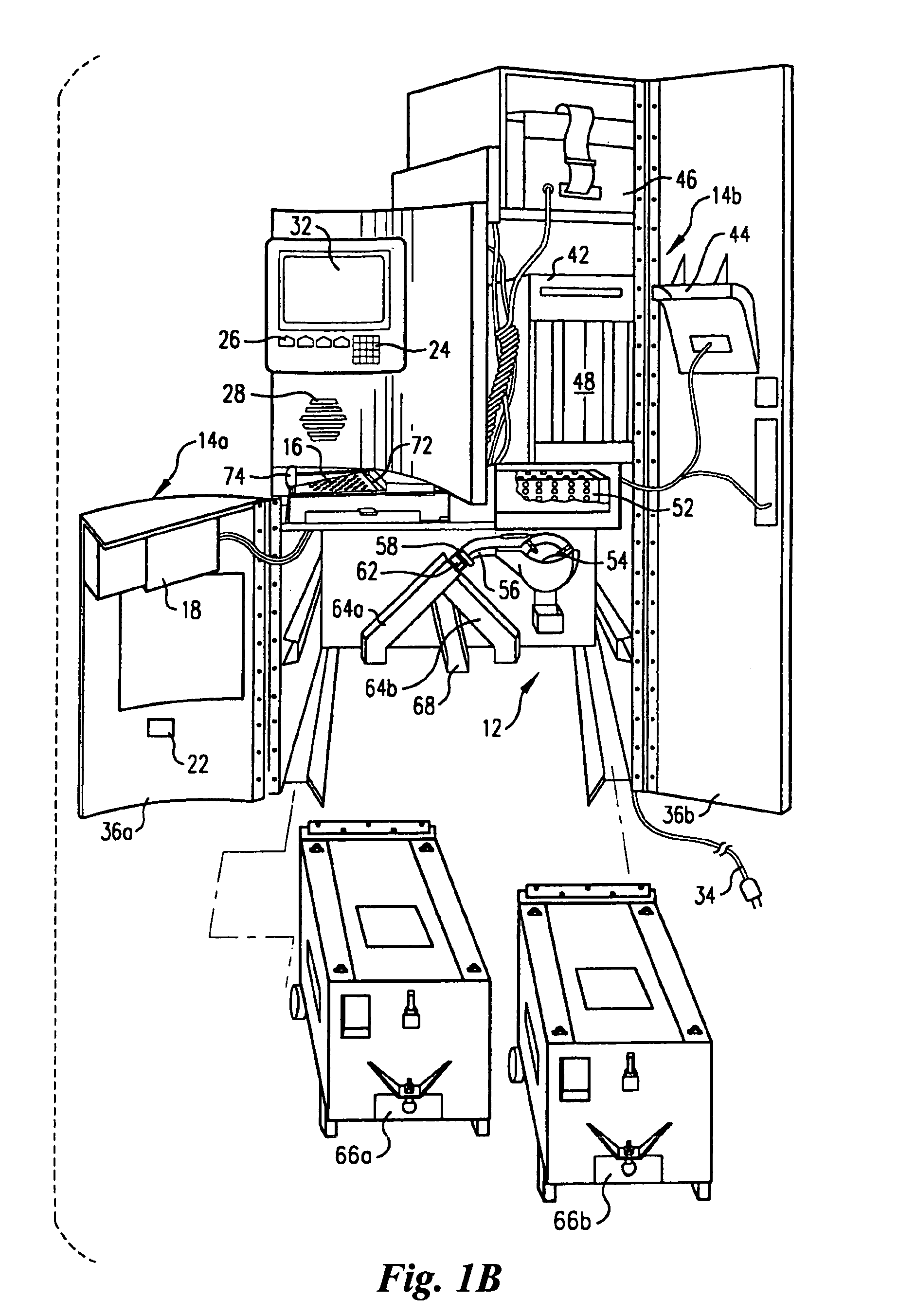Coin discrimination apparatus and method
a coin discrimination and apparatus technology, applied in the field of coin discrimination apparatus and method, can solve the problems of insatiable environment for undesirably large proportion of discrimination errors, and inability to operate coin handlers and sensors that might be operable for a one-at-a-time coin environment, etc., and achieves high degree of automation, high tolerance, and convenient use
- Summary
- Abstract
- Description
- Claims
- Application Information
AI Technical Summary
Benefits of technology
Problems solved by technology
Method used
Image
Examples
Embodiment Construction
[0086]The sensor and associated apparatus described herein can be used in connection with a number of devices and purposes. One device is illustrated in FIG. 1A In this device, coins are placed into a tray 120, and fed to a sensor region 123 via a first ramp 230 and coin pickup assembly 280. In the sensor region 123, data is collected by which coins are discriminated from non-coin objects, and different denominations or countries of coins are discriminated. The data collected in the sensor area 123 is used by the computer at 290 to control movement of coins along a second ramp 125 in such a way as to route the coins into one of a plurality of bins 210. The computer may output information such as the total value of the coins placed into the tray, via a printer 270, screen 130, or the like. In the depicted embodiment, the conveyance apparatus 230, 280 which is upstream of the sensor region 123 provides the coins to the sensor area 123 serially, one at a time.
[0087]The embodiment depic...
PUM
 Login to View More
Login to View More Abstract
Description
Claims
Application Information
 Login to View More
Login to View More - R&D
- Intellectual Property
- Life Sciences
- Materials
- Tech Scout
- Unparalleled Data Quality
- Higher Quality Content
- 60% Fewer Hallucinations
Browse by: Latest US Patents, China's latest patents, Technical Efficacy Thesaurus, Application Domain, Technology Topic, Popular Technical Reports.
© 2025 PatSnap. All rights reserved.Legal|Privacy policy|Modern Slavery Act Transparency Statement|Sitemap|About US| Contact US: help@patsnap.com



